Retrospective Meeting
This guide will walk you through the essential elements of use retrospective meeting to keep your attendees aligned and engaged.
Try Lark for Free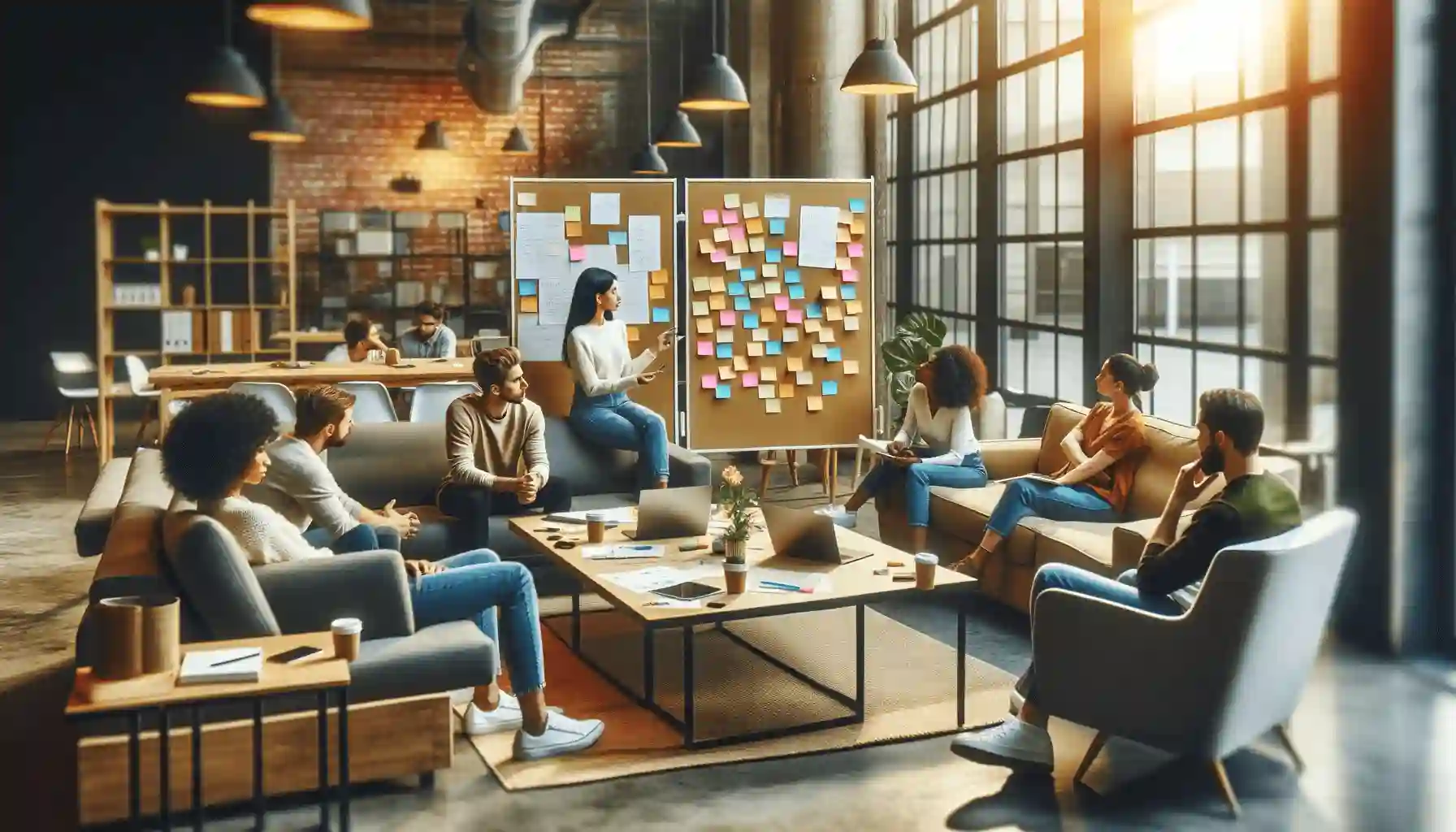
Retrospective meetings, a crucial component of Agile methodology, provide teams with the opportunity to reflect on their past work, identify areas for improvement, and create actionable plans for enhancing their processes. These meetings promote continuous learning, team collaboration, and a commitment to excellence. In this comprehensive guide, we'll delve into the significance of retrospective meetings, how to conduct them effectively, and tips for maximizing their impact on your projects.
Use Lark Meetings to turn meetings into true collaborative experiences.
What is a retrospective meeting?
Understanding Retrospective Meetings
A retrospective meeting, often referred to as a "retro" or "post-mortem," is a dedicated session where a team reflects on its recent work or project. The goal is to assess what went well, what didn't, and how the team can improve its processes, collaboration, and outcomes.
Goals of a retrospective meeting
Fostering Continuous Improvement and Collaboration
The primary goals of a retrospective meeting include:
- Reflecting: Encouraging team members to reflect on their recent work or project.
- Identifying Improvements: Identifying areas where the team can improve its processes or collaboration.
- Taking Action: Creating actionable plans to implement improvements.
Who should attend a retrospective meeting?
Key Participants
Retrospective meetings involve the following key participants:
- Scrum Team: Comprising developers, testers, and other relevant team members.
- Scrum Master: The facilitator responsible for guiding the retrospective process.
- Product Owner: Representing the project's stakeholders and objectives.
Learn more about Lark x Meetings
Topics, agenda, and structure of a retrospective meeting
Structuring the Meeting
A well-structured retrospective meeting typically includes the following components:
- Opening: Setting the tone and objectives of the retrospective.
- Data Gathering: Collecting data on the recent work or project, often using visual aids.
- Generating Insights: Encouraging team members to share their thoughts and observations.
- Identifying Action Items: Determining specific actions to address areas for improvement.
- Closing: Summarizing key takeaways and the commitment to change.
How to conduct an effective retrospective meeting?
Step-by-Step Guide
Conducting an effective retrospective meeting requires adherence to best practices and a well-defined process. Follow these steps for a successful retrospective meeting:
- Set the Stage: Create a safe and open environment where team members feel comfortable sharing their thoughts.
- Gather Data: Collect data on the recent work or project, such as performance metrics, incidents, or observations.
- Generate Insights: Encourage team members to share their observations, both positive and negative.
- Identify Patterns: Look for recurring themes or patterns in the feedback and data.
- Discuss Impact: Discuss the impact of these patterns on the team's performance and outcomes.
- Brainstorm Solutions: Brainstorm actionable solutions to address identified areas for improvement.
- Prioritize Actions: Prioritize the proposed actions and determine responsibility for implementation.
- Commit to Change: Ensure that the team is committed to implementing the agreed-upon actions.
- Follow Up: Monitor progress on the action items and assess their impact in future retrospectives.
Learn more about Lark x Meetings
How often should you hold retrospective meetings?
Meeting Frequency
Retrospective meetings are typically held at the end of each iteration or project cycle. The frequency depends on the length of the iteration, with shorter iterations requiring more frequent retrospectives. Common frequencies include:
- End of Each Sprint: In Scrum, retrospectives are often held at the end of each sprint, which is typically two to four weeks.
- End of Each Project Phase: For longer projects or non-Scrum environments, retrospectives can be held at the end of major project phases.
- As Needed: In some cases, teams may hold retrospectives whenever they believe they can benefit from the reflection and improvement process.
Key differences between retrospective meetings and similar meetings
Understanding Distinctions
Retrospective meetings have unique characteristics that distinguish them from other types of gatherings:
- Focus on Reflection: Retrospectives primarily focus on reflecting on past work and experiences.
- Continuous Improvement: The main goal is to identify areas for improvement and take action.
- Open Dialogue: Retrospectives encourage open and honest discussions among team members.
Related:
Master the Art of Meeting Notes with Lark for Enhanced Collaboration | Lark Blog | Lark BlogLearn more about Lark x Meetings
Common pitfalls of retrospective meetings
Avoiding Mistakes
To ensure the success of retrospective meetings, be cautious of these common pitfalls:
- Blame Culture: Allowing the meeting to become a blame game rather than a constructive discussion.
- Lack of Follow-Up: Identifying areas for improvement but failing to implement changes.
- Not Creating a Safe Space: Failing to create an environment where team members feel comfortable sharing their thoughts and observations.
Tips for maximizing the impact of retrospective meetings
Enhancing Effectiveness
To make the most of retrospective meetings, consider implementing these tips:
- Create a Safe Space: Ensure that team members feel safe sharing their perspectives and observations.
- Encourage Openness: Foster an environment where all feedback is valued, whether positive or negative.
- Focus on Action: The goal of retrospectives is to identify actionable improvements, so prioritize concrete actions.
- Rotate Facilitators: Consider rotating the role of facilitator to encourage diverse perspectives and approaches.
Related:
Unlock the Power of Webinars: A Comprehensive Guide to Boost Your Business | Lark Blog | Lark BlogLearn more about Lark x Meetings
Examples
Real-world scenarios
Real-world scenarios
Let's explore three real-world scenarios of successful retrospective meetings in various contexts:
Scenario 1: Software Development Sprint Retrospective
Brief Content: A software development team conducts a sprint retrospective at the end of a two-week sprint. The meeting takes place in a conference room, and team members gather around a whiteboard.
Detailed Content: The retrospective begins with the Scrum Master setting the stage and reminding the team of the meeting's purpose. Team members use sticky notes to jot down positive and negative observations from the sprint. These observations range from technical issues to team dynamics. The team collectively groups similar observations on the whiteboard and discusses their impact. They then brainstorm actionable solutions and decide on the most critical actions to implement in the next sprint. The meeting concludes with a commitment to change and a plan for follow-up.
Scenario 2: Marketing Campaign Post-Mortem
Brief Content: A marketing team holds a post-mortem retrospective after completing a major advertising campaign. The meeting takes place in a comfortable meeting room.
Detailed Content: Team members begin the retrospective by sharing their thoughts and observations on the campaign. They discuss what worked well, such as successful ad placements and engagement metrics, as well as what didn't go as planned, like missed deadlines and unexpected challenges. The team identifies patterns in their feedback, such as the need for better deadline management. They brainstorm and prioritize actions, such as implementing project management software and improving communication channels. The meeting concludes with a commitment to implement these changes in future campaigns.
Scenario 3: Agile Project Retrospective
Brief Content: An Agile project management team conducts a project retrospective at the end of a multi-month project. The meeting is held in a dedicated project room.
Detailed Content: The retrospective begins with the facilitator emphasizing the importance of the meeting and creating a safe space for discussion. Team members discuss their experiences during the project, highlighting successes and challenges. They identify recurring issues, such as communication breakdowns and scope changes. The team brainstorms actions, including better communication protocols and more comprehensive project planning. Each action is assigned to a team member, and a timeline is established for implementation. The meeting ends with a sense of commitment to improving future project outcomes.
Tips for do's and don'ts
Best Practices and Pitfalls to Avoid
Follow these do's and don'ts to ensure productive and effective retrospective meetings:
| Do's | Don'ts |
|---|---|
| Create a safe and open environment for sharing feedback. | Don't focus solely on assigning blame or dwelling on past mistakes. |
| Prioritize actionable improvements that can be implemented. | Avoid rushing through the retrospective without allowing sufficient time for discussion. |
| Encourage all team members to participate and share their perspectives. | Neglect to follow up on action items or track their progress. |
| Foster a culture of continuous improvement and learning. | Disregard the importance of celebrating successes and acknowledging growth. |
Use Lark Meetings to turn meetings into true collaborative experiences.
A Game Changer for Retrospective Meeting: Empower your team with Lark Meetings
In the fast-paced and dynamic world of modern business, effective communication and collaboration are crucial for success of Retrospective Meeting. Here we introduce Lark Meetings to serve as a centralized hub for all communication needs.
Transform your meetings into collaborative endeavors
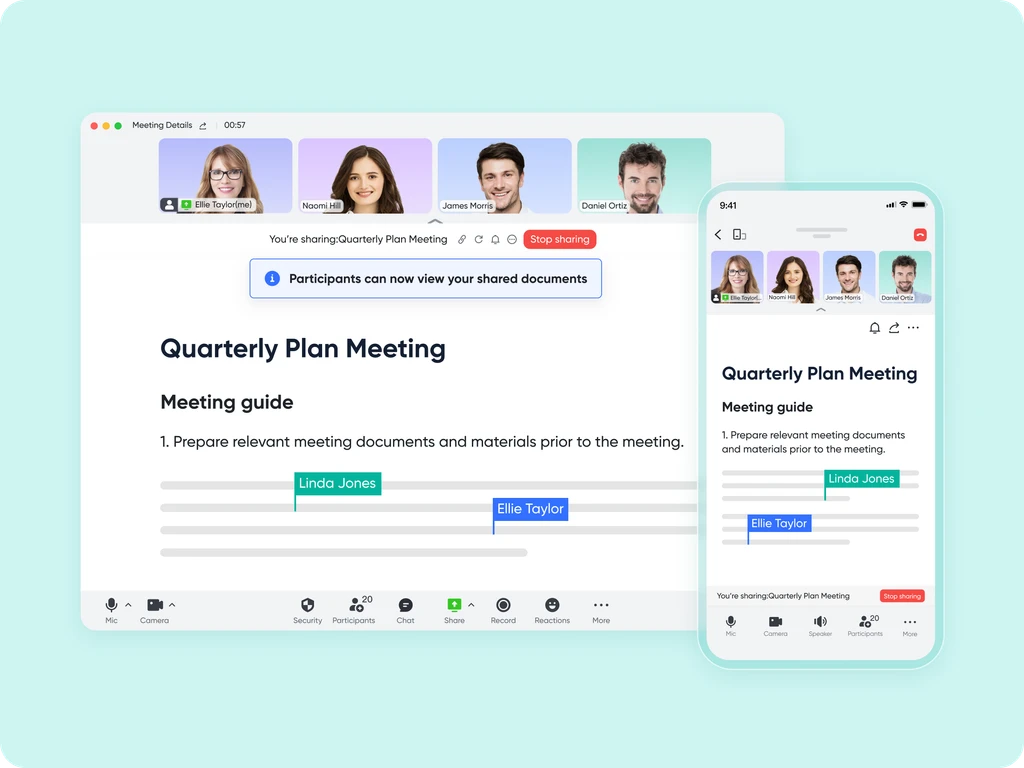
Leverage the potency of in-call document sharing, intelligent meeting minutes, and mobile-optimized features to enhance productivity collaboratively, irrespective of your location or schedule.
Seamlessly collaborate in real-time, across any device
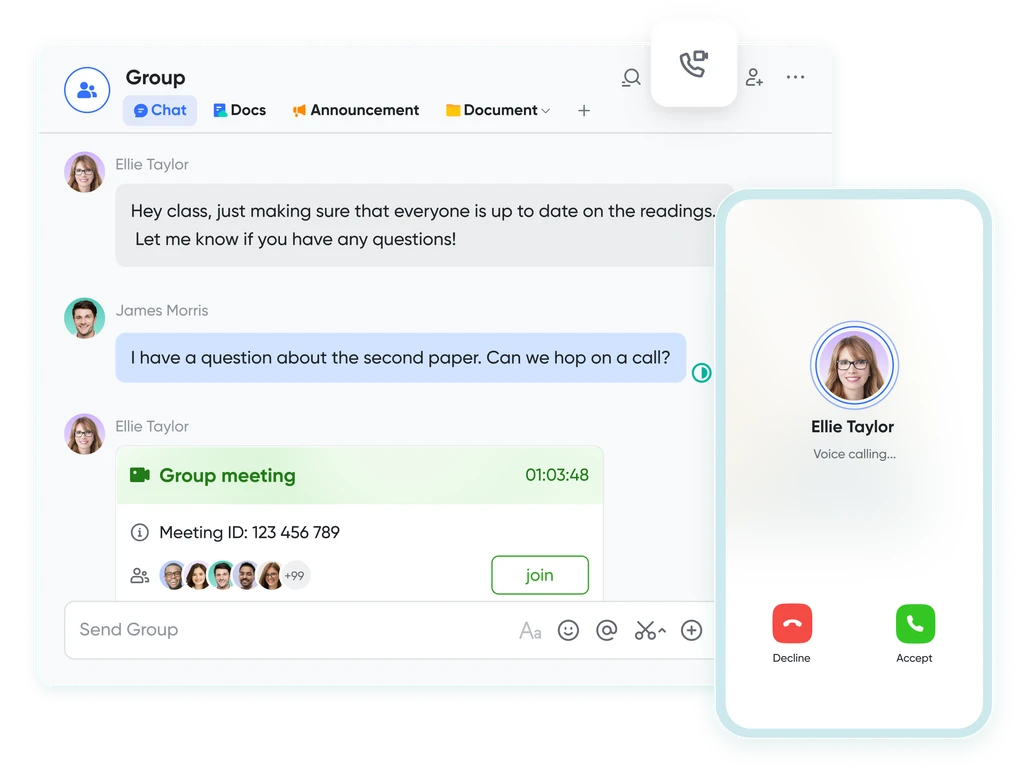
Share live documents instead of just screen views. Participants can navigate and edit simultaneously within the video call window, even while on the move.
Shift your focus to engagement, not note-taking
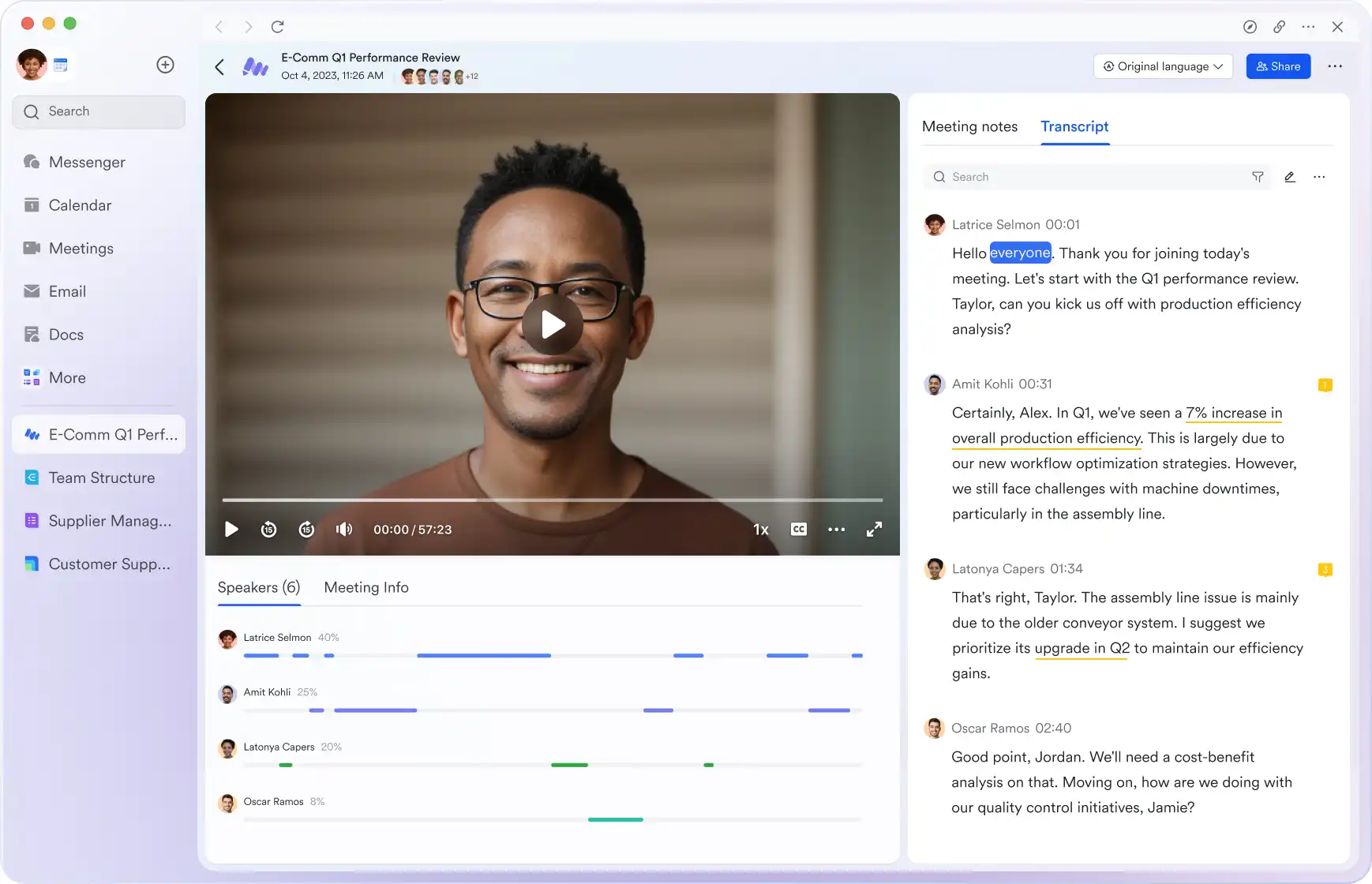
Lark Minutes automatically converts video meetings into transcripts, facilitating easy viewing, searching, and collaborative editing. Stay in the loop asynchronously, even if you can't attend the live meeting. Lark Minutes for meeting minutes support translation into 10+ different languages.
Break language barriers in communication
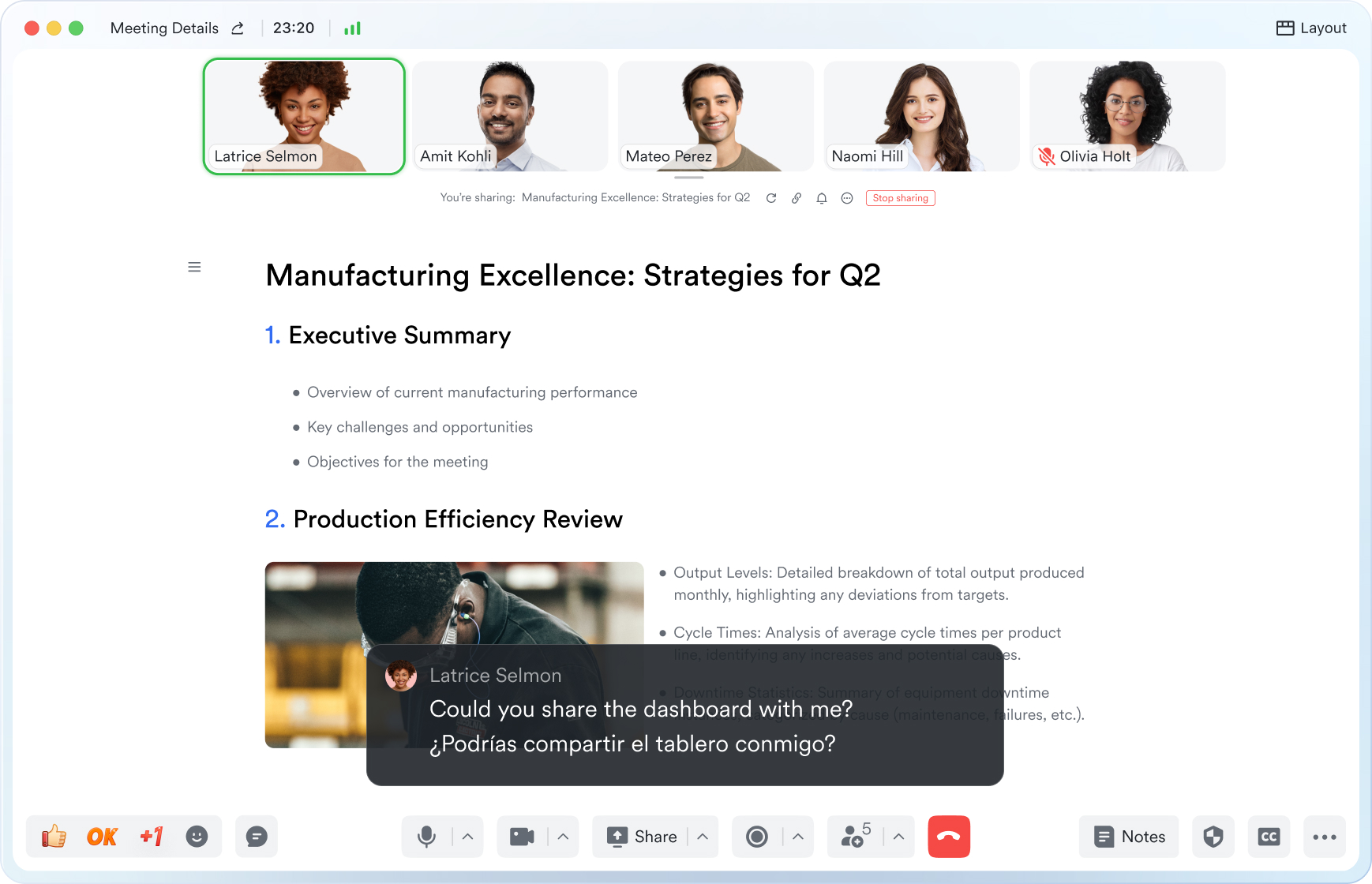
Lark Meetings provide real-time translation for subtitles, allowing individuals from diverse backgrounds to express themselves in their native languages. Ensure every voice is heard, regardless of geographical location. Live subtitles currently support translations from English, Chinese, and Japanese to 10+ different languages. See more translation feature in Lark.
Connect with larger audiences
Host dynamic online meetings and events accommodating up to 1,000 participants, with the flexibility of up to 50 breakout sessions for intimate group discussions within the larger meeting context. Try more Lark features for free.








